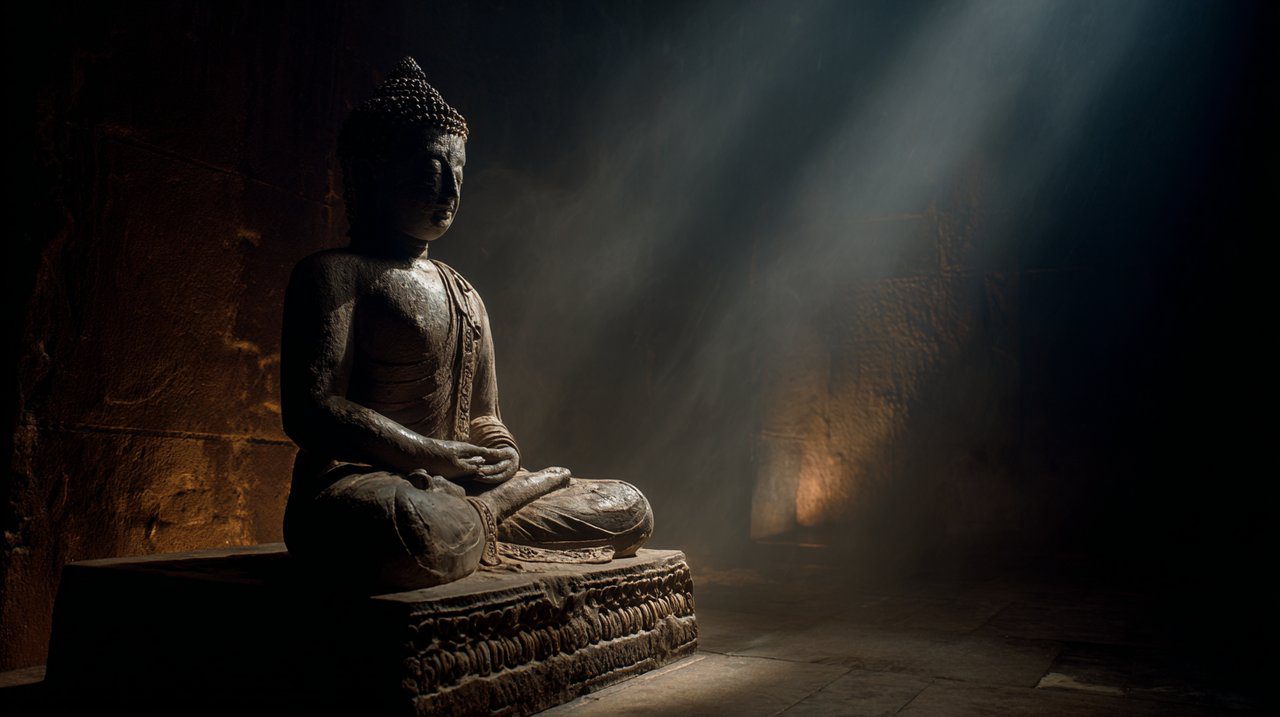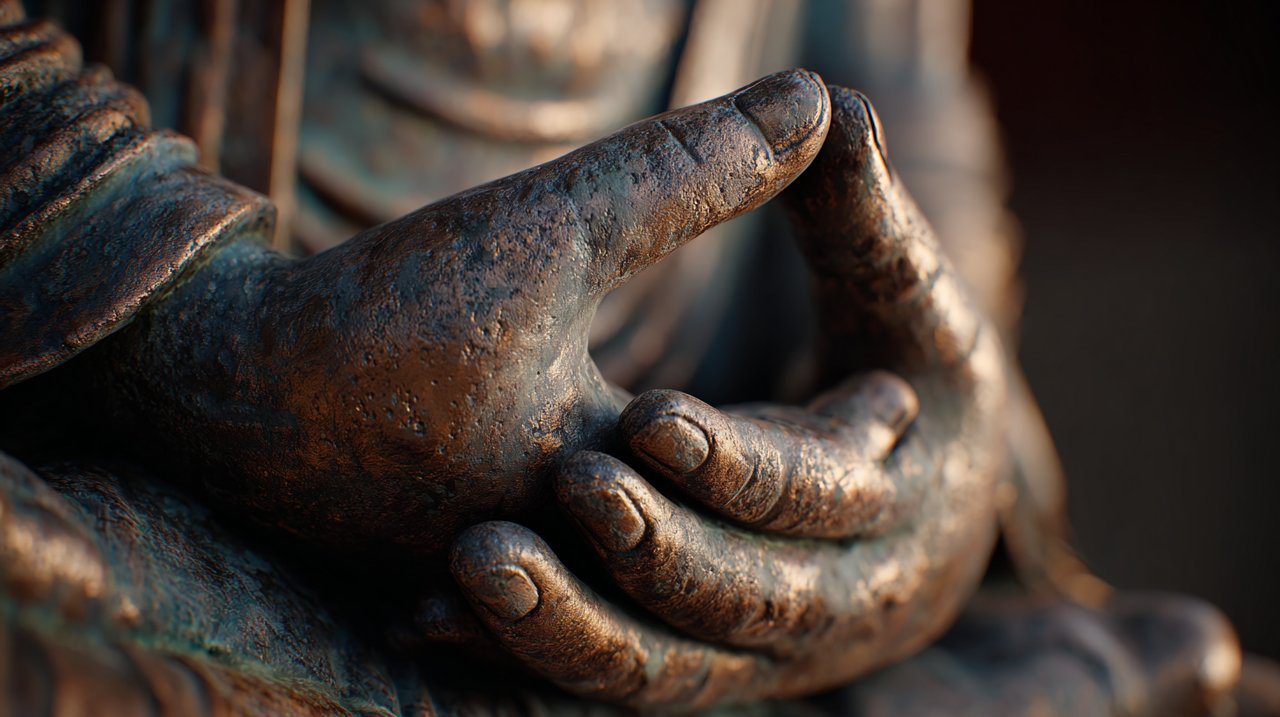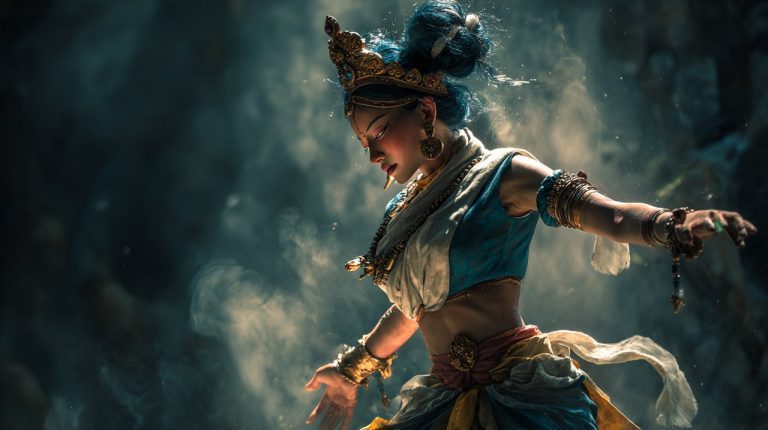Buddha Poses: Understanding Their Sacred Forms and Meditative Power
My journey into the profound world of spiritual symbolism began in a serene temple, where the stillness of an ancient Buddha statue spoke volumes. Its posture, radiating incredible peace, was not merely an artistic creation but a silent teacher. This initial encounter ignited a deep curiosity within me about the profound stories embedded within Buddha poses.
It set me on a path of discovery, revealing the deep significance of these ancient forms—a wisdom I am honored to share with you.

The Art of Stillness: Decoding Buddha Poses
Historical Roots and Enduring Significance
Buddha poses are far more than just artistic representations; they are a rich, visual language of spiritual teaching. Each posture embodies core principles like enlightenment, compassion, and inner harmony. Think of them as ancient textbooks, where every curve and angle tells a story of awakening.
Originating in ancient India, these symbolic forms evolved over centuries, spreading across Asia with the growth of Buddhism. Every pose, whether seated, standing, or reclining, conveys a specific narrative or state of being. They serve as tangible reminders of the Buddha’s life journey and his path to awakening.
Understanding these forms offers a direct connection to the rich tapestry of Buddhism’s origins and fundamental teachings. They are steeped in spiritual symbolism, reflecting various stages of spiritual development, much like milestones on a profound journey.
Buddhism Origins, Core Teachings and Practices ExplainedThe Visual Language of Postures: Common Forms
Different Buddha poses visually communicate distinct aspects of the Buddha’s life and teachings. By learning this visual language, we deepen our appreciation for their spiritual depth and the timeless wisdom they impart.
- Seated Postures: These often depict states of profound meditation, wisdom, or enlightenment. They invite us into a world of inner stillness.
- Lotus Position (Padmasana): Legs crossed with feet resting on opposite thighs. This iconic pose symbolizes deep meditation and unwavering stability, like a mountain unmoving.
- Half Lotus (Ardha Padmasana): One foot placed on the opposite thigh, the other on the floor. It offers a more accessible yet still stable meditative posture, a gentle entry point.
- Burmese Position: Both legs folded with knees resting on the floor, one foot positioned in front of the other. This provides a relaxed and stable meditative seat, perfect for sustained practice.
- Standing Postures: These typically signify teaching, protection, or boundless compassion, often showing the Buddha in action or offering guidance.
- Abhaya Mudra (Fearlessness): While primarily a hand gesture, it is often seen in standing Buddhas with the right hand raised, palm facing outwards. This powerful gesture symbolizes the dispelling of fear and offers reassurance.
- Reclining Posture: This iconic pose represents the Buddha’s passing into Parinirvana, or final nirvana—a peaceful transition to ultimate liberation.
- Lion’s Pose: Depicts the Buddha reclining peacefully on his right side, head supported by his right hand. It signifies a peaceful departure and ultimate freedom from suffering.
The Expressive Hands: Understanding Buddha Mudras
Introduction to Symbolic Hand Gestures
Beyond the primary Buddha poses, the hands of a Buddha statue often form specific, highly symbolic gestures known as mudras. These intricate hand positions are absolutely integral to comprehending the full meaning conveyed by each statue. Each mudra is believed to channel specific energies and transmit profound spiritual messages.
I distinctly recall an encounter in Thailand, standing before a magnificent bronze Buddha whose hands bore an unfamiliar gesture. A local monk, perceiving my genuine curiosity, graciously unveiled the wisdom held within those carefully positioned fingers. This moment was a revelation, transforming my perception of these statues from mere artistic creations into living, embodied teachings.
Truly, learning how to identify Buddha statue hand gestures opened up an entirely new dimension of communication with these sacred forms.

Key Mudras and Their Profound Meanings
While numerous mudras exist, each possessing unique significance, understanding the most commonly observed ones offers invaluable insight. Here are some key mudras and their spiritual interpretations—consider them fundamental vocabulary in this visual language:
- Bhumisparsha Mudra (Earth-Touching): Depicts the right hand reaching to touch the earth. This powerful gesture symbolizes the Buddha’s enlightenment under the Bodhi tree, calling the earth to witness his awakening and triumph over temptation.
- Dhyana Mudra (Meditation): Both hands rest gently in the lap, palms facing upwards, with the tips of the thumbs lightly touching to form a subtle triangle. This mudra signifies profound meditation, wisdom, and concentrated focus—a visual representation of inner peace.
- Dharmachakra Mudra (Wheel of Dharma): Formed by the thumbs and index fingers of both hands touching to create circles, often positioned at the chest level. This mudra represents the Buddha’s First Sermon, metaphorically "turning the Wheel of Dharma," and signifies teaching and spiritual discourse.
- Abhaya Mudra (Fearlessness): The right hand is raised with the palm outward and fingers pointing upwards. It powerfully symbolizes fearlessness, divine protection, peace, and reassurance, offering solace to those who seek it.
- Varada Mudra (Generosity): The right hand is extended downwards, palm outward, with fingers pointing towards the ground. This mudra embodies the granting of wishes, boundless compassion, and profound charity—a gesture of giving.
Embodied Wisdom: Integrating Poses into Meditation Practice
Foundational Meditative Postures for Beginners
For those drawn to the stillness embodied by Buddha poses for personal spiritual practice, discovering a comfortable and stable meditation posture is paramount. While the full lotus position is iconic, it is by no means the sole or mandatory way to sit. The primary objective is to establish a stable base that allows your body to fully relax, enabling your mind to settle and find its inner peace.
My own early meditation journey was marked by discomfort, as I initially believed I had to force myself into the perfect lotus. Aching knees and a restless mind were common companions! It was through patient exploration and embracing alternative postures that I truly found my rhythm. Finding the right Buddha meditation poses for beginners is therefore about gentle inquiry and self-compassion, not striving for an elusive perfection.
Consider these accessible options for your practice:
- Burmese Position: Sit with your legs folded, one foot placed directly in front of the other, allowing your knees to rest comfortably on the ground. Utilizing a cushion beneath your hips can gently elevate them, subtly tilting your pelvis forward to support a natural spinal alignment.
- Seiza (Kneeling): Kneel with your bottom resting on your heels. A dedicated meditation bench or a firm cushion positioned between your bottom and heels can provide excellent support and alleviate pressure.
- Chair Meditation: Sit upright in a chair with your feet placed flat on the floor, ensuring your spine remains straight yet relaxed. This is a perfectly valid, effective, and often highly beneficial posture for many practitioners, offering stability without physical strain.
Enhancing Focus with Hand Gestures
Once you are comfortably settled in your chosen posture, your hands can serve as a powerful anchor, further supporting your meditative state. The Dhyana Mudra is a particularly common and effective hand position for deep meditation.
To form this mudra, gently place your right hand on top of your left, with both palms facing upwards. Lightly touch the tips of your thumbs together, forming a subtle energetic circuit. This specific arrangement is believed to promote profound focus, cultivate inner unity, and deepen concentration.
As you hold this mudra, gently bring your awareness to the natural rhythm of your breath, observing it without any attempt to alter it. This simple yet profound practice, when combined with a stable and comfortable posture, creates a powerful foundation for inner exploration and the cultivation of profound peace.
Beyond Form: The Transformative Power of Buddha Poses
Cultivating Mental Clarity and Stress Resilience
Engaging with Buddha poses, whether through dedicated study, contemplative reflection, or consistent physical practice, extends profound benefits far beyond their mere physical form. These revered postures inherently cultivate a deep sense of presence and unwavering mindfulness. By observing the inherent stillness they embody, we are gently invited to slow our own pace and discover a similar profound stillness within ourselves.
This process encourages a deeper reflection on the very essence of what 'Buddha' signifies in terms of enlightenment and boundless compassion.
What Does Buddha Mean?|Exploring the Essence of Enlightenment and CompassionThis holistic practice can significantly enhance mental clarity, empowering us to navigate the complexities of daily life with heightened awareness and diminished reactivity. The consistent act of returning to these sacred forms, even if only mentally, serves as a powerful anchor, effectively helping to reduce stress and anxiety by gently shifting our focus from external chaos to an enduring internal calm.
Fostering Emotional Balance and Spiritual Connection
For me, the sustained contemplation and integration of Buddha poses into my life has unfolded as a profound journey into emotional well-being. These sacred forms have illuminated vital lessons in patience, the liberating principle of non-attachment, and the immense power inherent in stillness. Over time, I've observed a subtle yet undeniably powerful shift in my capacity for genuine compassion, extending both towards myself and all other beings.
It is a journey of softening the heart, of consciously allowing an abiding peace to permeate the deepest layers of one's being. These ancient forms are far more than mere historical artifacts; they stand as living blueprints for cultivating a more harmonious and enlightened existence.
They extend a timeless invitation to connect with a universal spiritual truth, fostering a deeper sense of purpose and an awareness of profound interconnectedness.
Understanding Buddha poses is not a finite destination, but rather an ongoing, evolving journey of self-discovery and spiritual growth. It's about embracing the path, just as the Buddha's own journey was a continuous unfolding. May your exploration of these profound symbols bring you clarity, peace, and deeper connection.
💡 Frequently Asked Questions
Buddha poses are more than artistic representations; they are visual teachings that embody principles of enlightenment, compassion, and inner harmony. They serve as profound reminders of the Buddha's life journey and his path to awakening.
Mudras are symbolic hand positions that are integral to understanding the full meaning of a Buddha statue. Each mudra channels specific energies and conveys profound spiritual messages, transforming statues from mere art to living teachings.
Common postures include seated poses like the Lotus Position, symbolizing stability and deep meditation; standing poses often seen with the Abhaya Mudra, signifying fearlessness or protection; and the Reclining Posture (Lion's Pose), representing the Buddha's passing into Parinirvana.
Engaging with Buddha poses, whether through study, contemplation, or physical practice, can enhance mental clarity, reduce stress and anxiety, and foster emotional well-being and spiritual connection by cultivating presence and mindfulness.







